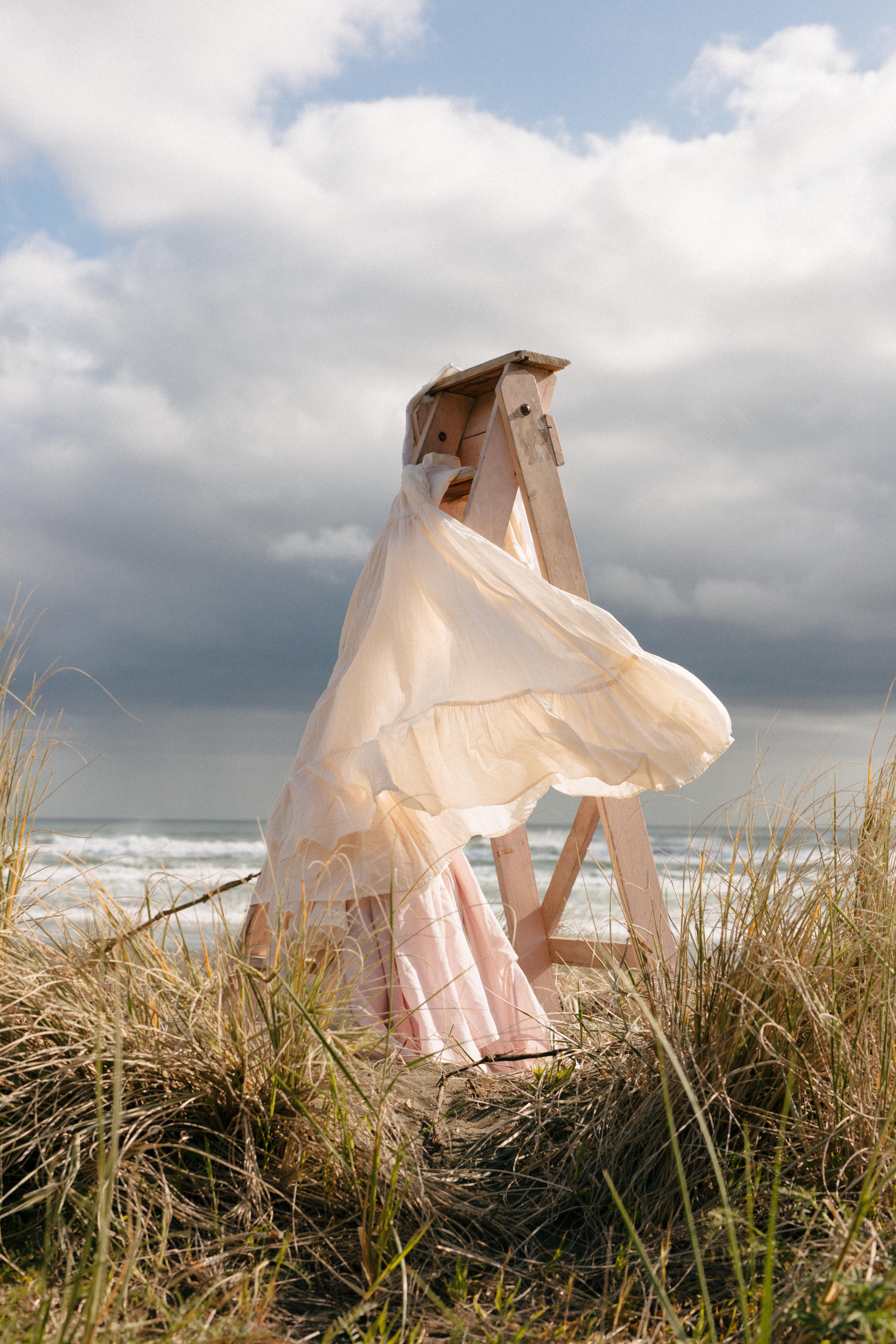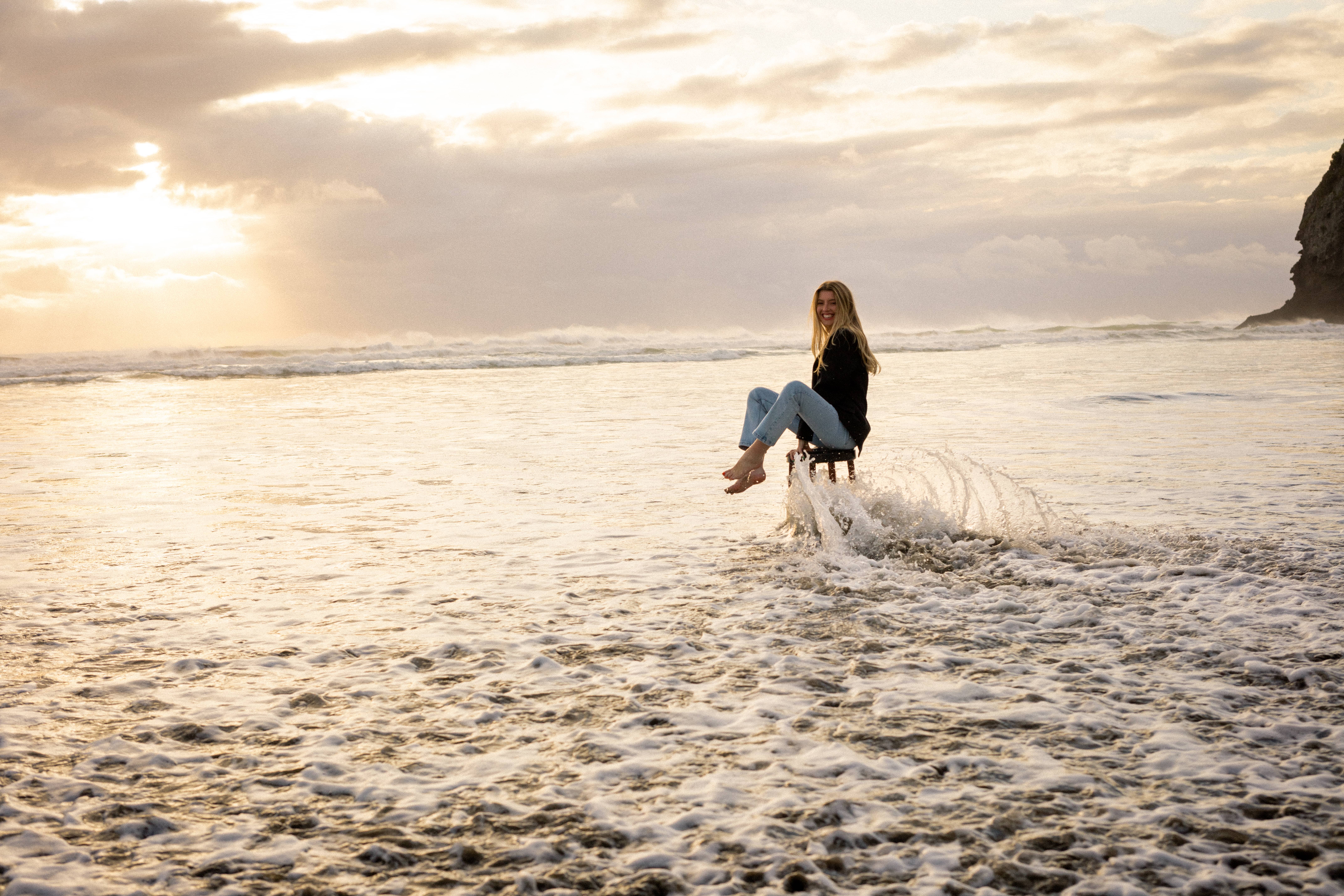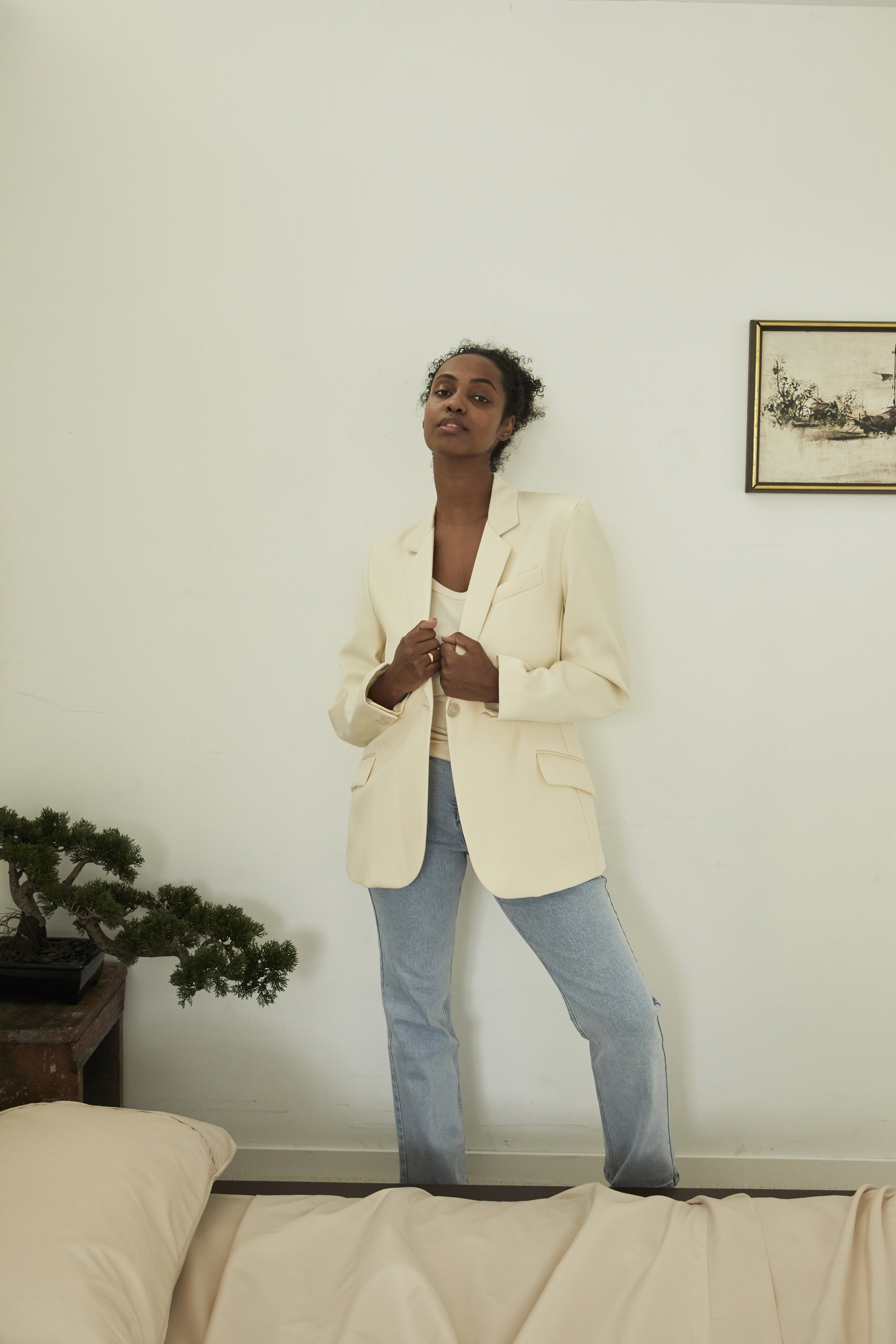News feed

Since launching in 2016, the Maggie Marilyn label has been gracing women’s wardrobes with romantic, whimsical garments. Soft hues of cornflower blue, sea foam and blossom mango permeated our collection of monochromatic basics and everyday attire, with an invitation to dress differently; more freely and with flair. But for designer Maggie Hewitt, her eye for soft pleats, flirty shoulders and innate detailing carries a bigger purpose, one for a “better world.”
“A world where people and the planet are really able to thrive,” Hewitt passionately tells GRAZIA on the eve of her latest release. “It’s really as simple as that.”
At just 26-years-old, the New Zealand-based creative is born from a new generation of designers. Preceding the likes of fellow designers BODE and Blair Archibald, Hewitt has always infused her label – as she does using colour – with a sustainable mindset; each fibre can be traced back to its original source, every piece is consciously designed and produced, and education for the wider fashion industry is continually at the forefront. But just as 2020 forced us all to a dramatic halt and as we questioned the future of our very lives and livelihoods, it prompted Hewitt to reexamine what sustainable fashion is to the core.

“Like a lot of businesses, 2020 has really forced me to stop and reflect and made me focussed on accelerating our goals around transparency and our supply chains. Ensuring that all people are paid and treated fairly, reducing our carbon footprint and working with suppliers who have regenerative farming practices. It’s kind of weird to say I’m grateful, but I guess it definitely has given me time to reflect.”
Following on from Maggie Marilyn’s first ‘Somewhere’ collection – a line of traceable, evergreen essentials launched in 2019 to immediate critical and commercial acclaim – the eponymous brand has ushered in the second hotly-anticipated instalment, ‘Sport’, albeit via a Maggie Marilyn not quite seen before. With the intention to become circular, this line is designed with the ability to be recycled or composted at it’s end of life – a non-negotiable for Hewitt in producing accessibly priced essentials, and will almost entirely revolve around the future of the brand – one which Hewitt envisions to thrive through to 2100 and beyond. The MM production practices will first realign and reverse the inventory ratio from 80 percent seasonal collections / 20 percent ‘Somewhere’ – to 95 percent Somewhere and five percent Forever capsules. This in turn will banish the seasonal trend cycle – just as the likes of Saint Laurent and Gucci have too opted out of – and focus on timeless styles.
“There’s been so many learnings and I know that there will continue to be, but the biggest learning to date is been challenging this big traditional industry that we’re apart of and trying to do things differently,” Hewitt tells me. “We got to the point where you really need to walk the talk and if we’re going to continue releasing seasonal collections four, five times a year, how can we really stand behind that we’re telling our customers to shop consciously, to shop slower, to buy forever but we’re constantly bringing out newness.”
Hewitt continued, “It wasn’t sustainable for me as a designer to keep producing my best work. I’m excited that we can work to our own pace and that there won’t be a specific timeline for when the forever capsules will come out. It will just be when I’m feeling inspired, or I feel like our customers are missing something from their wardrobe.”
According to Business Insider, the fashion industry is responsible for 10 percent of the world’s carbon emissions and more worryingly, 85 percent of all textiles become waste each year.
In reversing the very way Maggie Marilyn operates, it has further allowed capacity for vital sustainable practices such a regenerative agriculture to take precedence, not only to assist the brand, but the suppliers and farmers who are responsible for the quality silks, wool and cotton all essential to the classic Maggie Marilyn garment. As defined by the designer, regenerative agriculture (it’s a mouthful to say) is hindered on creating microbial diversity within the soil. Farming land which takes on this concept will increase how much the carbon the soil can sequester, build crop resilience by increasing soil nutrition, less reliance on pesticides and herbicides and hold greater volumes of water. As Hewitt eloquently conveys, “It really lays the beautiful platform for not only it being good for the planet, but for farmer’s property being able to flourish.
“That’s the utopia right, where what’s good for people and the planet is also good for business, it has to be ultimately.”
Maggie Marilyn will continue as a direct-to-consumer entity, with newness only available online and in-store in Auckland, New Zealand where ‘slow fashion’ takes form in an experiential retail space. Maggie Marilyn will experience no markdowns or sales, ever, in a bid to teach consumers that though time stretches on, her pieces don’t lose value. It should be treasured, adored year in and year out.”
“We want to slow down the shopping process so that we are encouraging our customer to buy consciously and buy pieces that they can see sitting in their wardrobe for a really long time.”
Speaking on the design of the store, Hewitt reveals, “As you walk in the store, there is this really beautiful grounding experience where hopefully for our customer it feels like you leave the outside world behind. You walk through this almost glass hallway of corrugated glass, it’s slightly blurred, you can kind of see inside, so it’s a very intimate experience and you walk in to what feels like a wardrobe in essence. There are these big oak doors and you pull back one by one, a door at a time and see clothes hanging on a rack – you don’t walk into the store and just see clothes, you’ve got to go through this methodical process of walking around the store and opening up these wardrobe doors and seeing capsule edits behind these doors.”
While the playful exuberance of the brand has indulged all corners of the globe, Maggie Marilyn in essence is still a small brand – the promise of further brick-and-mortar stores internationally however predicts a different future. So the question remains, can large, multi-national conglomerates mimic and follow suit on Maggie Marilyn’s perfect world? According to the designer, yes, and she hopes her own journey inspires a new, worldly and more conscious fashion industry.
“We talk internally as a brand about the power of influence and whilst we are a small business and don’t have aspirations to be the size of an H&M, there is so much power in small business innovation and collective strength in that. Our goal at Maggie Marilyn is to show that you can create products that are good for everyone involved in your supply chain, have a regenerative impact on the planet and are commercially viable.”
Visit Maggie Marilyn, here.












